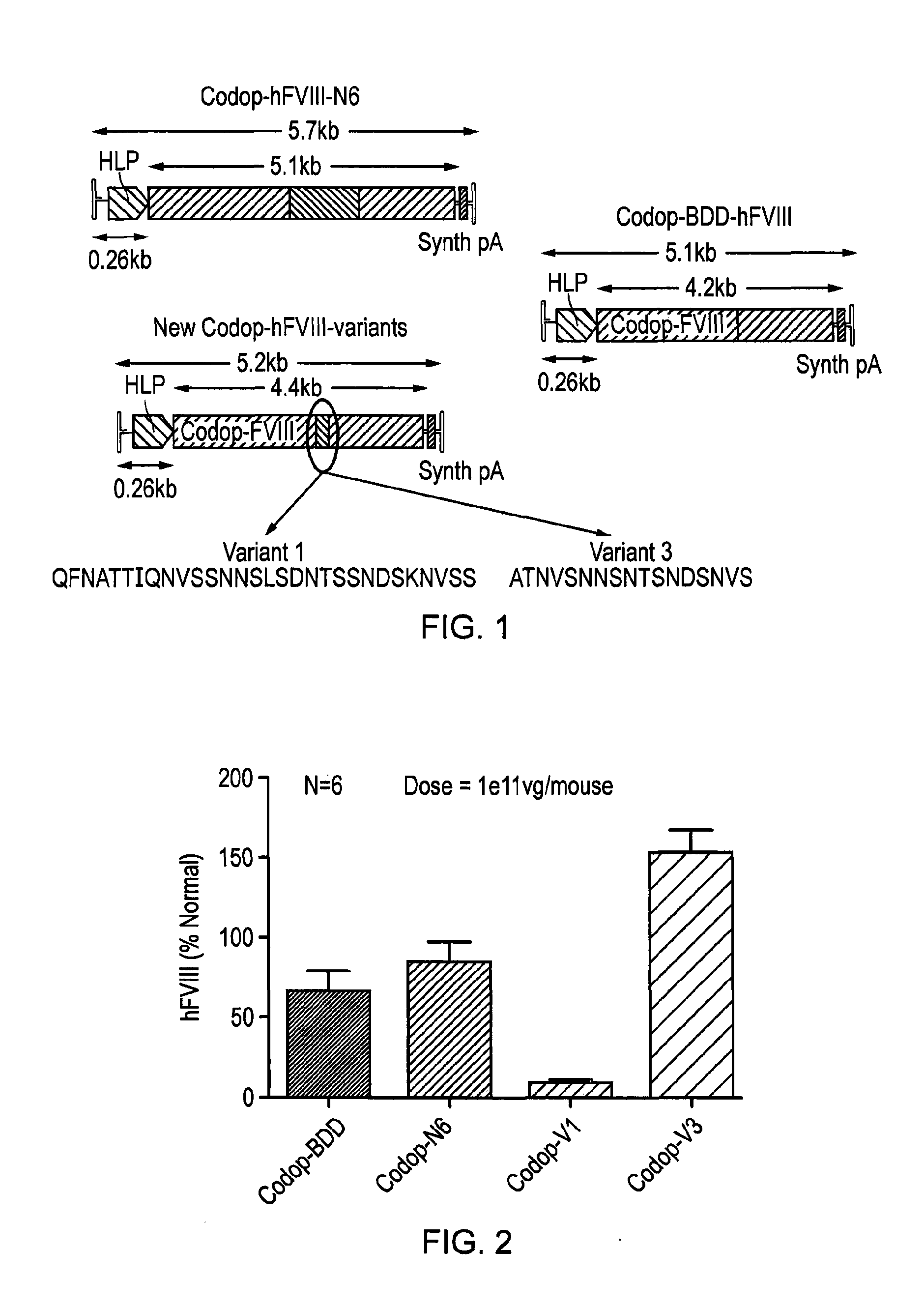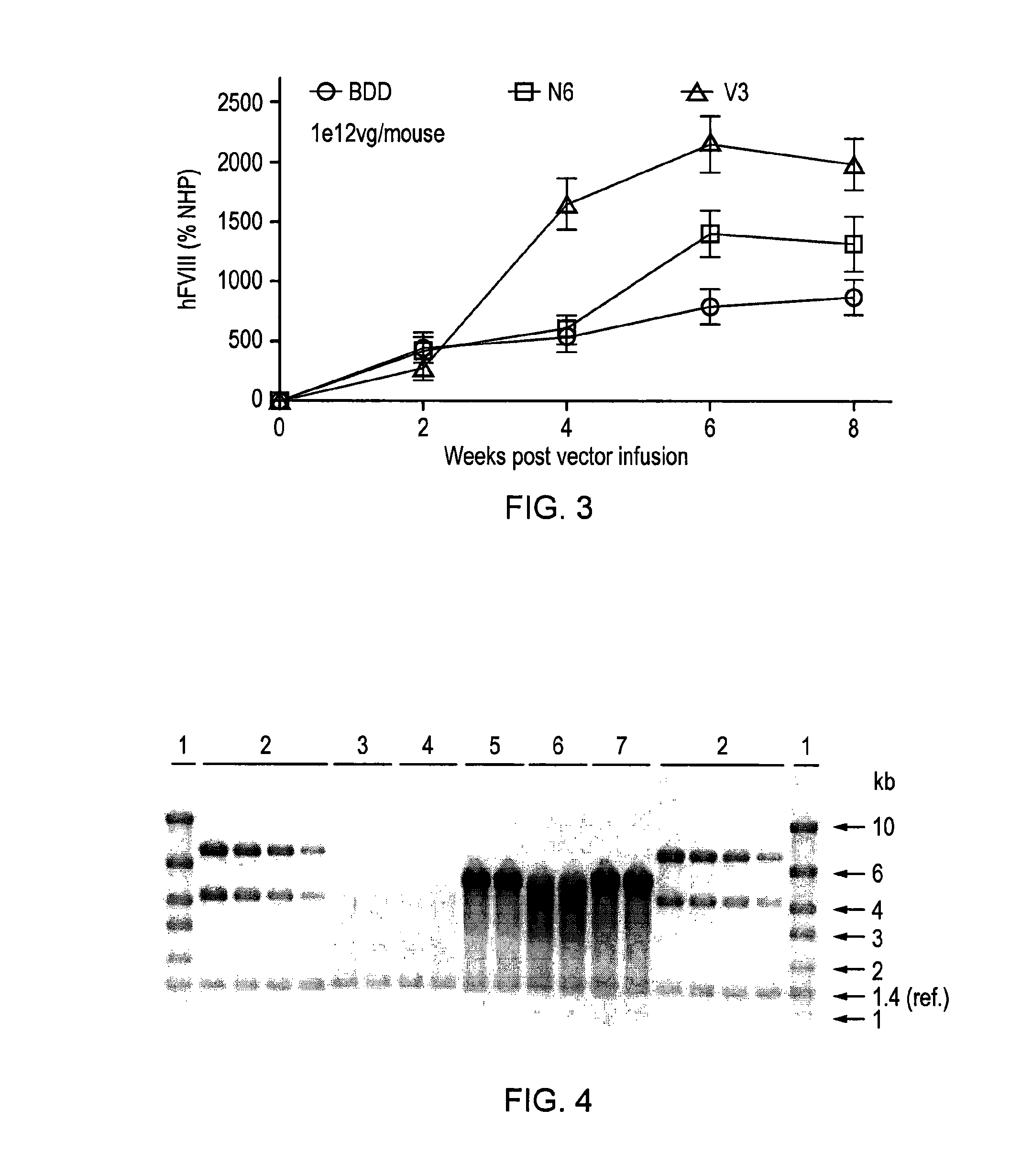Factor viii sequences
a technology of coagulation factor and nucleotide sequence, which is applied in the field of coagulation factor viii nucleotide sequence, can solve the problems of prohibitively expensive treatment (prophylaxis) for the majority of the world, and do not eliminate the need for lifelong fviii protein administration, so as to improve one or more symptoms and increase the functional factor viii
- Summary
- Abstract
- Description
- Claims
- Application Information
AI Technical Summary
Benefits of technology
Problems solved by technology
Method used
Image
Examples
Embodiment Construction
[0153]In order to develop a safe and efficient gene transfer strategy for the treatment of haemophilia A (HA), the most common inherited bleeding disorder, the inventors have developed a new FVIII variant called codop-hFVIII-V3 (FIG. 1). This variant builds on a previous variant, a 5013 bp codon-optimised FVIII called codop-hFVIII-N6. The inventors have further modified codop-hFVIII-N6 to improve the efficiency with which it is packaged into rAAV without compromising its potency in vivo.
[0154]The cDNA in codop-FVIII-V3 has been modified to reduce its size to 4424 bp (FIG. 1) through the replacement of the 678 bp B domain spacer sequence with a 93 bp linker that codes for 31 amino acids of which 17 amino acids are unique, including the 6 asparagine moieties believed to be required for efficient cellular processing of FVIII.
[0155]The context in which these 6 asparagine moieties are brought together is important. rAAV vectors encoding codop-hFVIII-V1 mediated FVIII expression that was ...
PUM
| Property | Measurement | Unit |
|---|---|---|
| length | aaaaa | aaaaa |
| nucleic acid | aaaaa | aaaaa |
| size | aaaaa | aaaaa |
Abstract
Description
Claims
Application Information
 Login to View More
Login to View More - R&D
- Intellectual Property
- Life Sciences
- Materials
- Tech Scout
- Unparalleled Data Quality
- Higher Quality Content
- 60% Fewer Hallucinations
Browse by: Latest US Patents, China's latest patents, Technical Efficacy Thesaurus, Application Domain, Technology Topic, Popular Technical Reports.
© 2025 PatSnap. All rights reserved.Legal|Privacy policy|Modern Slavery Act Transparency Statement|Sitemap|About US| Contact US: help@patsnap.com



